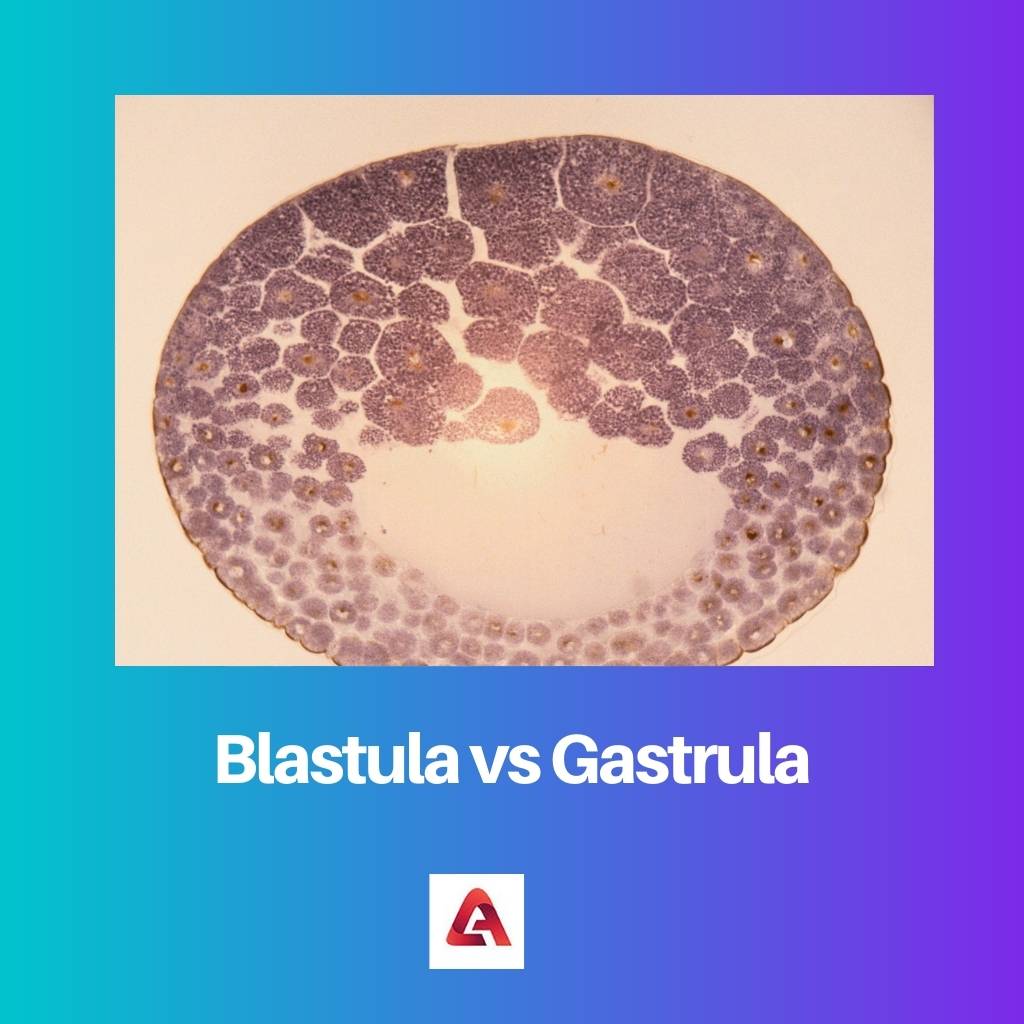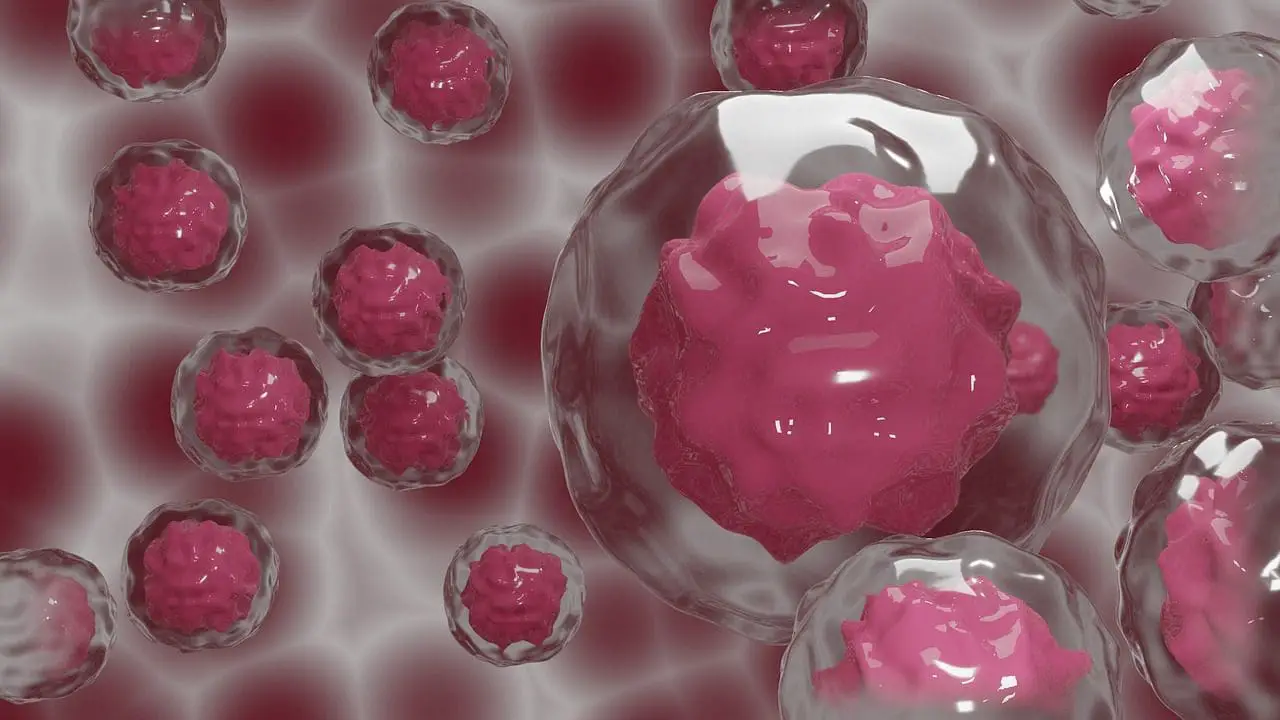A blastula’s formation stages are called blastulation, and that of a gastrula is called gastrulation. These stages come under the process of embryogenesis.
These are the early stages of the formation of an embryo. Before them comes fertilization, which is fertilizing of the egg.
After gastrulation comes organogenesis, which is the formation of the organs of an animal’s body.
Key Takeaways
- Blastula and Gastrula are developmental stages of an embryo in the process of becoming a multicellular organism.
- Blastula is an early stage characterized by a hollow ball of cells, while Gastrula is a later stage in which the hollow ball begins to fold inward, forming a three-layered structure.
- The Gastrula stage marks the beginning of differentiation, where the three germ layers form, which gives rise to all the tissues and organs of the organism.
Blastula vs Gastrula
Blastula is the first embryonic development stage, while Gastrula is the mature embryonic development stage that follows the blastula. The former has rapid mitotic divisions, while Gastrula has slow mitotic divisions. Unlike Gastrula, which is differentiated, blastula cells are undifferentiated.

The blastula is defined as a hollow sphere of cells. It is formed after the stage of fertilization.
It is produced when an embryo goes through a repeated cleavage of a fertilized egg. This stage is called blastulation.
It encloses a liquid cavity known as blastocoel by forming a protective layer known as blastoderm. The liquid cavity blastocoel contains proteins, amino acids, sugar, etc.
The gastrula is an early multicellular embryo made up of three germinal layers. It is developed from the blastula, and this stage is called gastrulation.
It consists of three germinal layers, i.e. ectoderm, mesoderm and endoderm. Their layers are responsible for forming various parts of the animal body later.
After the formation of the gastrula, the liquid cavity blastocoel is eliminated, and another cavity is created, called an endoderm.
Comparison Table
| Parameters of comparison | Blastula | Gastrula |
|---|---|---|
| Definition | Blastula can be described as a hollow sphere of cells. | Gastrula is an early multicellular embryo made up of three germinal layers. |
| Stages | The second stage is the process of embryogenesis. | The third stage is the process of embryogenesis. |
| Process name | Blastulation | Gastrulation |
| Number of cells | Less than the gastrula. | More than the blastula. |
| Embryo | Premature | Mature |
| Germ layer | None | Three layers, i.e., the ectoderm, the mesoderm, and the endoderm. |
What is Blastula?
Blastula can be described as a hollow sphere of cells. The word blastula is derived from the Greek word “blastos,” meaning sprout.
It is produced due to the repeated cleavage of the fertilized egg during an embryo’s early development. This stage is known as blastulation.
It is one of the stages in embryogenesis, which comes after the fertilization of the egg. Blastula encloses a fluid cavity known as blastocoel by forming a protective layer known as blastoderm.
The fluid cavity blastocoel contains essential components such as proteins, amino acids, sugar, ions, etc.; after the blastulation stage comes the gastrulation stage, further developing the embryo.
At the time of blastulation, the embryo is pre-mature. In mammals, including humans, the blastula is called the blastocyst, which contains an embryoblast that eventually defines the fetus’s structure.

What is Gastrula?
Gastrula is an early multicellular embryo made up of three germinal layers. It is formed after blastula, and this stage is known as gastrulation.
From gastrula, later, the fetus’s organs are developed, and that stage is called organogenesis. The animal body is made up of a massive number of issues.
These tissues are made from three different embryonic cell layers. These layers are the ectoderm: the outermost layer; mesoderm: the middle layer; and endoderm: the innermost layer.
Gastrulation reshuffles the blastula cells into these three layers. Later these layers help in the formation of various organs of the animal body.
The ectoderm layer is responsible for forming the outer parts of the animal body like skin, sense organs, etc. In contrast, mesoderm helps form the animal’s musculature, excretory, and reproductive system.
After the gastrula formation, the fluid cavity blastocoel is eliminated, and a new cavity is formed, known as an endoderm. Endoderm later forms the digestive organs and glands.
Gastrula also converts the spherical embryo of the blastula into a double-walled cup. During gastrulation, the embryo is matured.
Gastrula is made up of more cells than the blastula.

Main Differences Between Blastula and Gastrula
- Gastrulation and blastulation are two different stages in which the blastula is formed first and then the gastrula.
- The blastula is defined as the hollow sphere of cells. At the same time, the gastrula is determined as the early multicellular embryo comprising three different germinal layers.
- The process of formation of the blastula is called blastulation. In comparison, the process of formation of gastrula is called gastrulation.
- The gastrula has three different germ layers, i.e., the ectoderm, mesoderm, and endoderm. In contrast, there is no such germ layer present in the blastula.
- Gastrula has more cells as compared to the blastula.
- At the time of blastulation, the embryo is pre-mature. Whereas in the case of gastrulation, the embryo is matured.




